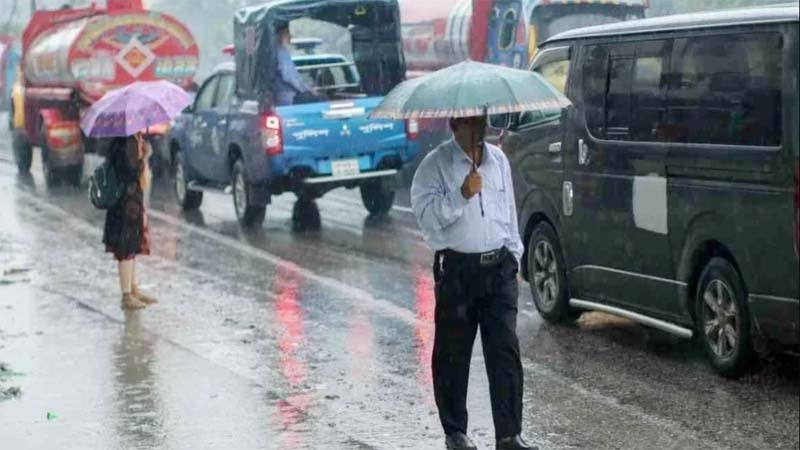- ‘Very unhealthy’ air quality persists in Dhaka |
- Customs duty on dates imports cut ahead of Ramadan |
- NBR extends VAT exemption on Metro Rail services |
- People eagerly await Tarique Rahman's homecoming Thursday |
- Palm trees axed in Naogaon bypass for safety of electric line |
Rain Brings Relief as Dhaka's Air Quality Improves to 'Good'

Dhaka's air quality has turned "good", thanks to rain.
With an air quality index (AQI) score of 44 at 9:10 am Tuesday, the metropolis
ranked 84th in the list of world cities with the worst air quality.
An AQI between 0 and 50 is considered to be ‘good’ while between 50 and 100
‘moderate’.
Democratic Republic of the Congo's Kinshasa, Indonesia's Jakarta, and Qatar's
Doha occupied the first three spots in the list, with AQI scores of 194, 154
and 122, respectively.
An AQI between 101 and 200 is considered 'unhealthy', particularly for
sensitive groups.
Similarly, an AQI between 201 and 300 is said to be 'poor', while a reading of
301 to 400 is considered 'hazardous', posing serious health risks to residents.
AQI, an index for reporting daily air quality, is used by government agencies
to inform people how clean or polluted the air of a certain city is, and what
associated health effects might be a concern for them.
In Bangladesh, the AQI is based on five criteria pollutants -- Particulate
Matter (PM10 and PM2.5), NO2, CO, SO2 and Ozone.
Dhaka has long been grappling with air pollution issues. Its air quality
usually turns unhealthy in winter and improves during the monsoon.
A report by the Department of Environment (DoE) and the World Bank in March
2019 pointed out that the three main sources of air pollution in Dhaka
"are brick kilns, fumes from vehicles and dust from construction
sites".
With the advent of winter, the city’s air quality starts deteriorating sharply
due to the massive discharge of pollutant particles from construction work,
rundown roads, brick kilns and other sources.
Air pollution consistently ranks among the top risk factors for death and
disability worldwide. Breathing polluted air has long been recognised as
increasing a person’s chances of developing a heart disease, chronic
respiratory diseases, lung infections and cancer, according to several studies.
As per the World Health Organization (WHO), air pollution kills an estimated
seven million people worldwide every year, largely as a result of increased
mortality from stroke, heart disease, chronic obstructive pulmonary disease,
lung cancer and acute respiratory infections, reports UNB.

